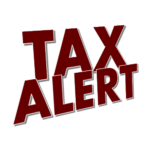May 04, 2017 Promising Future for the §179D Energy Efficient Commercial Building Deduction and the §45L Energy Efficient Home Credit
On May 4, 2017, Senator Ron Wyden along with 21 other Senators introduced The Clean Energy for America Act in the Senate. The bill contains several tax incentives that foster both energy efficiency as well as renewable energy, including modifications and extensions for the §179D Energy Efficient Commercial Building Deduction and the §45L Energy Efficient Home Credit.
CURRENT LAW
The §179D Energy Efficient Commercial Building Deduction is a Federal tax incentive promoting energy efficient buildings for both new and existing structures. Further, architects, engineers, contractors, environmental consultants or energy services providers may also be eligible for the incentive on public projects. This incentive is often referred to as the EPAct Deduction after the Energy Policy Act of 2005 that created it, or as the §179D Deduction, which relates to its tax code section. Commercial building owners can take a Federal tax deduction of up to $1.80 per square foot of the building’s floor area if they install certain property (e.g., efficient lights or HVAC systems, added wall or roof insulation, etc.) that reduces energy and power costs. The §179D Deduction is allowed for both new construction and renovations completed between 2006 through 2016.
The §45L Energy Efficient Home Credit, a companion tax incentive to §179D, allows eligible residential developers to claim a $2,000 tax credit for each newly constructed or substantially reconstructed qualifying residence. Examples of housing for which this credit applies include single family homes, apartments, condominiums, assisted living homes, and student housing. The residence or building must be three stories or less in height. This incentive applies to residences sold or leased before December 31, 2016.
SUMMARY OF CHANGES
Currently, §179D covers both new construction as well as renovations of existing buildings. Under the proposed legislation §179D would apply to ground-up construction whereas new §179F would apply to retrofitted commercial buildings. Section 179D under the proposed bill creates a performance-based incentive for increased energy conservation. New commercial buildings that are at least 25 percent more efficient than ASHRAE 90.1-2016 standards can receive a $1.00 per square foot tax deduction, which escalates with larger efficiency gains up to a maximum of $4.75 per square foot.
Under §179F, retrofitted commercial buildings can qualify for a $1.25 per square foot deduction for a 20 percent reduction in energy use with greater energy reductions qualifying for larger incentives of up to a maximum of $9.25 per square foot. The energy reduction from retrofits is verified by third-party modelers who are certified by the Treasury Department and the Department of Energy. The reduction is based on energy use prior to the retrofits as compared to energy use modeled after the retrofits are placed in service. Both §179D and §179F would be available through the end of 2018.
Currently, the EPAct Deduction can be allocated to architects, engineers, contractors, environmental consultants or energy services providers for public projects only, as public agencies pay no Federal income tax. The proposed rule expands upon those who can allocated the §179D Deduction to include §501(c) organizations, such as non-profit hospitals and educational facilities.
For §45L, the bill creates performance-based incentives for new and existing homes. The credits are based on the level of whole-home energy reduction. For new residences, buildings that are at least 25 percent more efficient than the 2015 International Energy Conservation Code baseline receive a $1,500 tax credit. More efficient homes receive a larger credit up to of $3,000 per unit. The credit is available for the contractor who builds and sells or leases the residence.
If these changes are not accepted, The Clean Energy for America Act also has provisions for extending §179D and §45L through December 31, 2018 without further modification. For the full text of the bill, please click below.
HOW WE CAN HELP
Out of all the buildings and residences that qualify, few taxpayers are taking the steps necessary to claim the available incentives for them. While currently expired, these incentives often provide current benefit on projects from 2016 and prior. ICS can provide a free analysis to determine if these tax strategies are feasible, and if so, provide the necessary third-party certifications and other assistance to benefit from these valuable incentives. For a free consultation, please contact an ICS Tax representative.
ABOUT ICS TAX, LLC
ICS Tax, LLC (ICS) is a consulting firm providing innovative tax planning strategies. ICS collaborates with taxpayers and their tax professionals to identify credits and incentives that reduce tax liabilities and increase profitability. ICS provides nationwide service through its Twin Cities headquarters as well as its offices located in Northeast Ohio, on the Pacific Coast, in the Tristate area, and the Dakotas.
Author: Alexander Bagne, JD, CPA, MBA, CCSP. Contributing Authors: Mike Piper, LEED AP and Kevin Johnson, LEED AP




